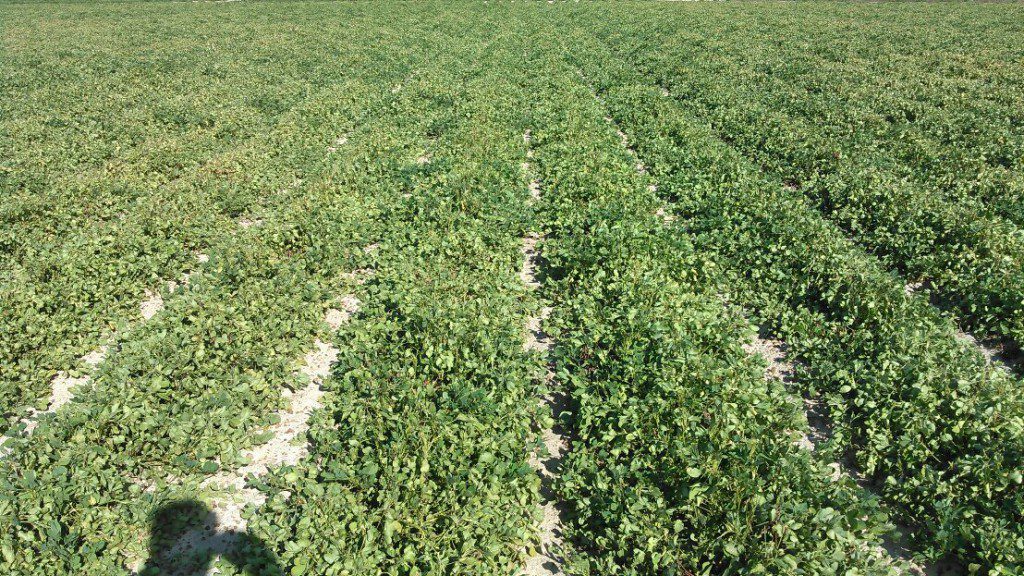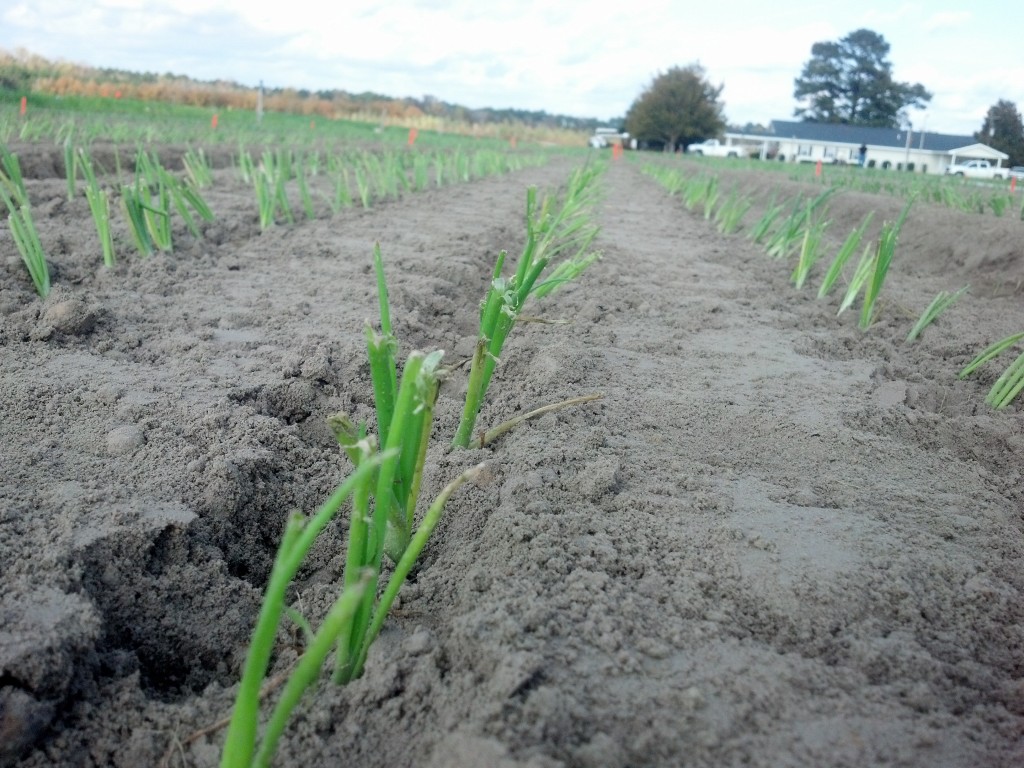
I found several dryland peanut fields yesterday with heavy spider mite infestations. If left untreated, these spider mites can kill a portion or all of the peanut canopy. Spider mites tend to be more of problem in hot, dry, weather, especially in dryland peanut fields. Some growers may first notice yellow “hot spots” of spider mites in small areas of a field, or on field borders. When the populations grow, they can cover large areas of fields, and also make a “webbing” over part of the canopy. In some fields, I noticed extremely high populations that just appeared as “drought stress” when driving by the field or looking from a distance, but a closer look revealed the spider mites. Spider mites feed on peanut leaves, and cause yellowing.
UGA Peanut Entomologist Mark Abney says timely treatment is critical for control of spider mites.
“Mite populations can quickly explode this time of year, and waiting a week to see what is going to happen with mites can be a mistake. When we do treat a field for spider mites, water volumes of 20 gallons or more per acre and high spray pressure will improve coverage and control. Comite is still the only true miticide registered for use in peanut, and applications are not cheap. Because Comite does not have good activity on mite eggs, two applications are often needed to get infestations under control especially if large numbers of eggs are present when the first treatment is made. I have never seen any miticide control mite populations effectively once the foliage had turned brown or black and mites were massed under webbing in the terminals of the plants.”
Here are some more pictures of spider mites in peanuts that i took yesterday.



